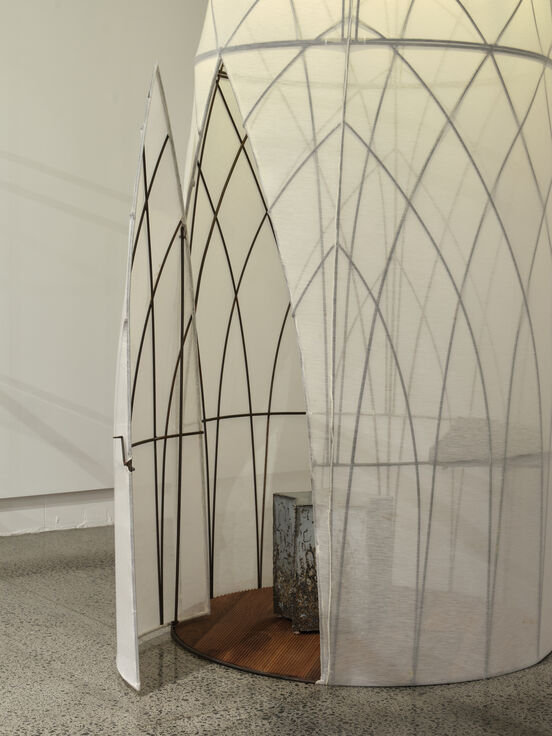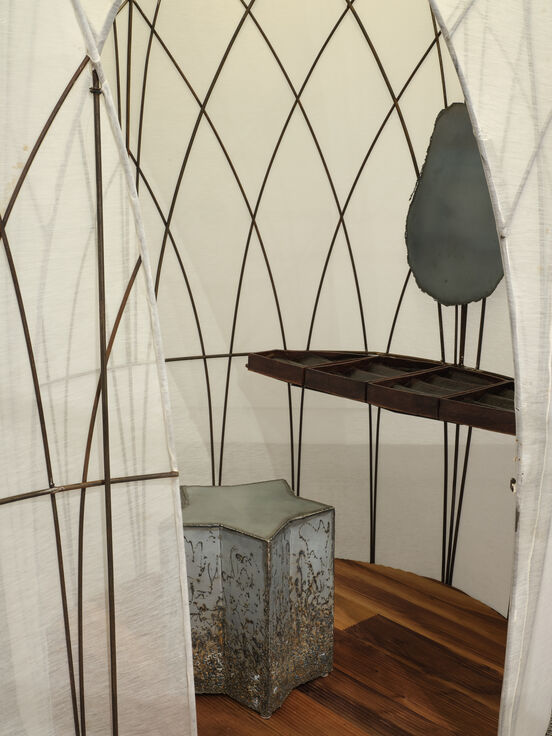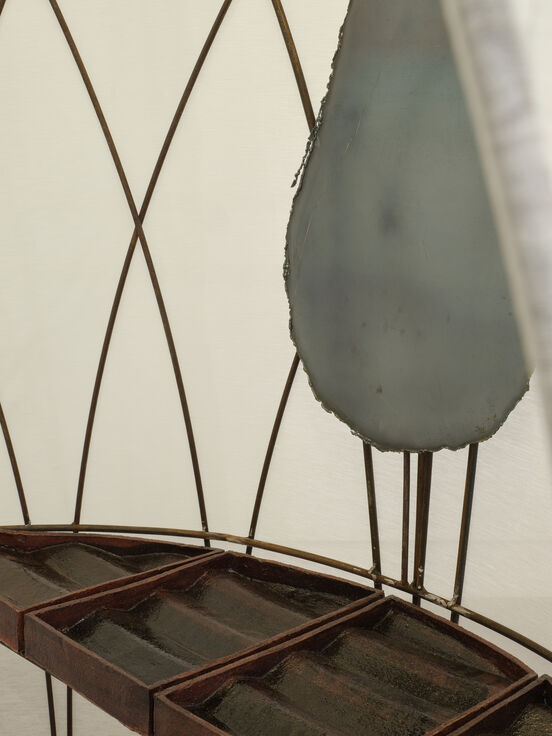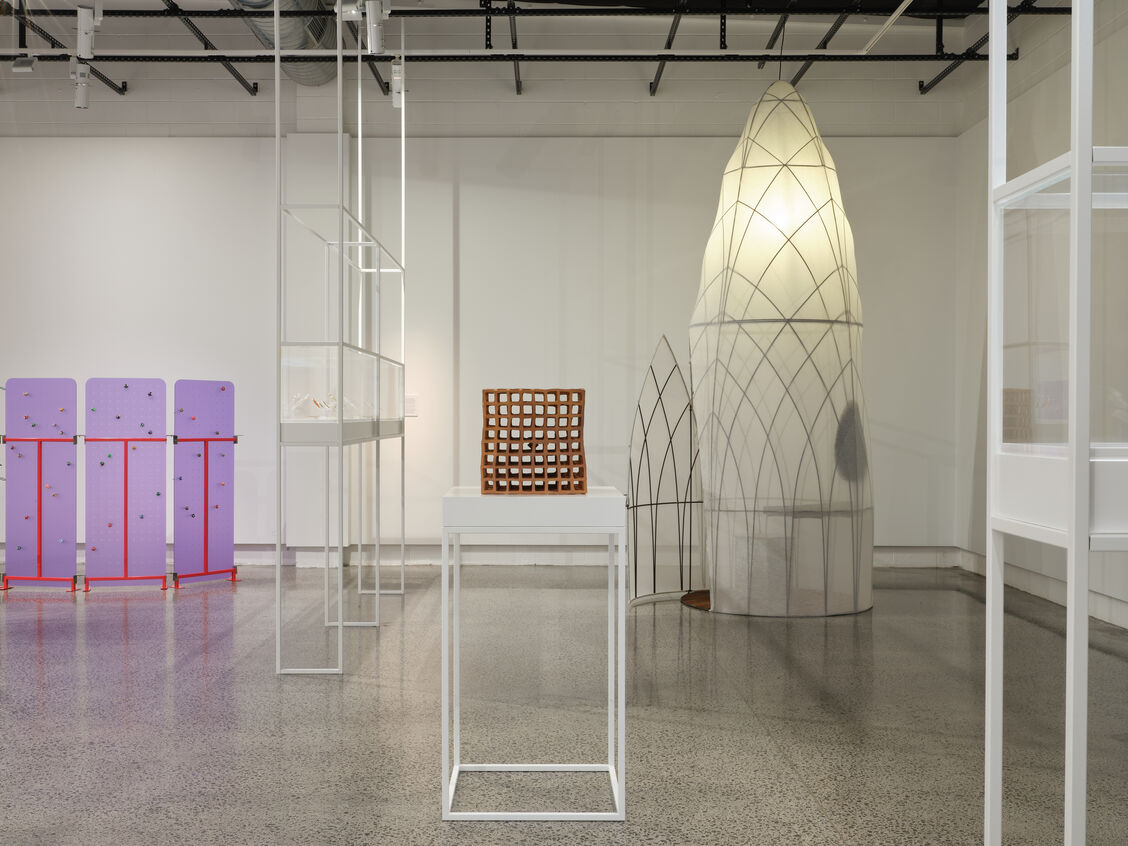Cook's Company: Gerard Dombroski
Three quick questions with the maker of a Cook & Company storage system
We ask Gerard Dombroski three questions about the new jewellery storage system he's made for Cook & Company.
What kind of life (real or imagined) does jewellery have within your storage system?
This storage system is part walk in wardrobe, part vanity, part chapel. Jewellery within this space has an inflated sense of self-worth, its confidence is through the roof.
What informed your response to the brief?
This work intersects several ideas, the role of a room in a house, the history of the vanity, and the transcendent’s role upon value.
In the last few years I’ve become increasingly intrigued by the way we layout our houses. We’ve developed some standard conventions and layouts that we haven’t really questioned in quite some time. I’ve been dreaming of ways to challenge these conventions seeking to create some unexpected architectural outcomes. One of which considers the home as an empty room, within which we would build freestanding objects as rooms which could be moved around, you could have endless options to reposition your layout to suit you at the time, I wonder if this would loosen the possession created by enclosure or highlight it.
Furniture has a close connection with Jewellery dating back to antiquity people had ornate boxes crafted to hold their precious belongings. In particular I have become interested in the box and its progression into the vanity in the 17th century. The Jean-François Oeben and Roger Vandercruse Mechanical Table for example is an elaborately crafted dressing table.
The non-domestic spaces we build also highlight importance, perhaps a lot more than our domestic investments. As time goes, I find myself more and more interested in historical architecture, lately I’ve been intrigued by stone gothic churches, it really amazes me what people could do with stone the verticality and extreme detailing creates this architectural notion of transcendence common within religious architecture. This sense of importance is never really found in contemporary domestic architecture and probably never will.
This structure stands alone as a walk-in vanity jewellery room chapel of absurdity and opulence. The room dedicated to jewellery highlights the importance we place on our beautifying paraphernalia. While practical in program it wants a space where in can sit off the wall and requires a ceiling so tall it’s a little ridiculous. It says I hold the most value in the room, it is exuberant and over the top like a Victorian vanity and is transcendent like a gothic chapel. Its kind of a romanticism of our objects.
What is your relationship with jewellery?
My personal relationship with jewellery is fairly detached and perhaps limited to the onlooker at the moment. However, I would say I’m pretty inspired by some New Zealand jewellers such as Karl Fritz and Lisa Walker, I particularly like their adsurd ability to reimagine objects and their wide-ranging technical skills. I also really like Chloe Rose Taylor how she pushes of scale into objects and furniture. Perhaps that’s kind of like me going from architecture to furniture and objects. Much like Octavia pushes exhibitions far beyond a display I like that we all seem to cross disciplines, I think as a maker and dreamer it’s a need. So, I guess to answer the question I look to art to inform architecture in the hopes of finding unknown or unexpected outcomes.
—
More about Gerard Dombroski
Gerard Dombroski is an architect, artist and furniture maker based in Te Whanganui-a-Tara Wellington. He received a Master’s in Architecture (Prof) from Victoria University of Wellington in 2014 and was registered in 2019. Dombroski’s architectural work spans residential and commercial projects over a range of scales and is delivered in dialogue with his studio practice, with insights from the design and fabrication of objects and structures feeding into his architecture studio and vice versa. Furniture by Dombroski was recently included in Home at Season. His Piccalo cabin designed and built while in residence at Driving Creek made the Dezeen Awards long list and was nominated for the 2023 Arch-daily Building of the Year Award.

Gerard Dombroski, Vanity, 2023.

Gerard Dombroski, Vanity (detail), 2023.

Gerard Dombroski, Vanity (detail), 2023, Photographs by Samuel Hartnett.

Installation view Octavia Cook: Cook & Company, 2023.

Concept drawing for Gerard Dobroski's Vanity, 2022